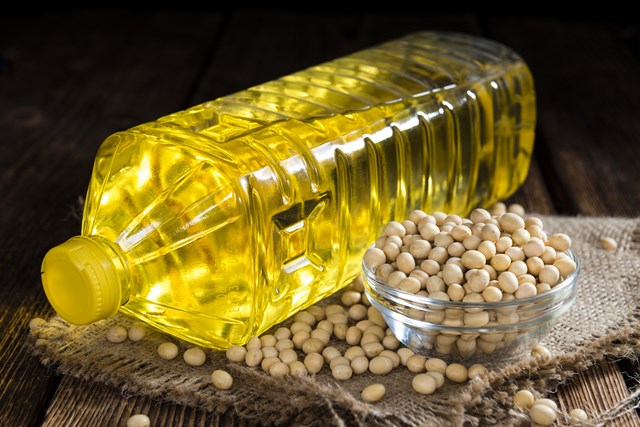By Matt McMillan, Ph.D., Equine Nutritionist, Hi-Pro Feeds
At one time, it was generally thought by the equine scientific community that horses could not digest and utilize fat at a rate that would be sufficient to contribute to the energy needs of the horse. The reason for this is because the horse does not have a gall bladder. The gall bladder in humans and other species is involved in the production, storage, and transportation of bile. Bile is an enzyme produced by the liver, and is used to break up and digest fatty foods in the small intestine. Without adequate amounts of bile, fats cannot be digested hence the belief at one time by equine nutritionists and veterinarians that the horse could not eat fat and use it as an energy source.
However, after numerous research trials, many years ago now, it was found that the horse could actually eat fat and use it as an energy source. It was concluded that although the horse doesn’t have a gall bladder to rely on for bile stores, it is actually capable of producing enough bile directly from the liver at time of forage and feed consumption to effectively and efficiently breakdown, digest, and utilize fat. It was further concluded that it is quite possible that one of the reasons that the horse does not have a gall bladder may be because the horse is known to be a grazing herbivore consuming small meals all day long rather than a gorging carnivore consuming large amounts of food in very small time periods. For the horse, small bursts of bile coming directly from the liver must be adequate amounts to digest fats in the small intestine when small meals are being consumed throughout the day.
 Once it was determined that fats could be fed to horses, continued research found that most fat sources were 90% digestible and could be fed at up to 15% of the total diet. It was established that when fat was added at ~15% of the total diet, most horses would begin to refuse the feed that the fat was added to. Researchers discovered that fat provided three times the energy value of an equal weight of oats, so calories could be easily increased without increasing bulk density of meals.
Once it was determined that fats could be fed to horses, continued research found that most fat sources were 90% digestible and could be fed at up to 15% of the total diet. It was established that when fat was added at ~15% of the total diet, most horses would begin to refuse the feed that the fat was added to. Researchers discovered that fat provided three times the energy value of an equal weight of oats, so calories could be easily increased without increasing bulk density of meals.
When producers realized that fat could be fed to horses effectively, they quickly picked up the practice of top-dressing with various types of fat sources. It was quickly found that corn oil was one of the most palatable sources, and became a favorite top-dress. Feed companies also followed by increasing fat levels in manufactured horse feeds in both textured and pelleted rations.
As research continued through the years, it was soon discovered that the consumption of certain fats were more beneficial than others. As in human nutrition, it was revealed that fats with higher levels of omega-3 fatty acids compared to omega-6 fatty acids exhibited more positive effects on many aspects of the body. This included key benefits in the areas of reproduction, bone development, red blood cell synthesis and production, and numerous inflammatory conditions in horses. Further studies found that long-term fat supplementation in the diet of the horse, regardless of fat source showed improved performance on many different levels. These include increased efficiency and use of stored fat sources, increased fitness showing evidence of delaying fatigue, and expressing evidence of improved muscle recovery post intensive exercise.
Over the years, further exploration has determined, and categorized fat sources with low, moderate, and high levels of omega-3 fatty acids. While we know that corn oil is low in omega-3 fatty acids, it has been found that soy and canola oil are moderate to good sources of omega-3 fatty acids. These sources are very palatable and are commonly used in commercial feed rations due to quality and affordability of these fats.
Rice bran is another good source of omega-3 fatty acids that is highly palatable and contains other benefits such as vitamin E and many essential amino acids. Due to the many benefits of rice bran, feed manufacturers use this commodity as an ingredient in many finished horse feed products even though the costs are typically higher than soy and canola. The best sources of omega-3 fatty acids are those that are considered long chain polyunsaturated omega-3 fatty acids. These sources generally have the highest amount of omega-3’s in relation to omega-6’s when compared to all other sources. These generally derive from flax and marine sources such as fish oil. While these sources are generally the most expensive sources, they do contain the most omega-3 fatty acids and therefore provide the most benefit.
Hi-Pro Feeds offers a full line of premium horse feeds utilizing quality sources of fat such as soy, canola, rice bran, and flax so that your horse can reach its maximum potential no matter whether it is in the breeding barn, or in competition. To find a premium horse feed that best meets the needs of your horse according to stage of life and level of activity, click here.


